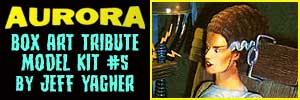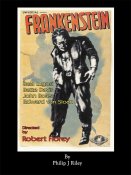Categories
- Alien / Aliens
- Animation & Superheroes
- Anime/Asian Cinema
- Attack of the B-Movies
- Books & Magazines
- Costumes/Masks/Halloween
- Dinosaurs and Prehistoric Beasts
-
DVD & BLU-RAY
- 1950's Monsters
-
Blu Ray
- Blu-Ray Item List: A
- Blu-Ray Item List: B
- Blu-Ray Item List: C
- Blu-Ray Item List: D
- Blu-Ray Item List: E
- Blu-Ray Item List: F
- Blu-Ray Item List: G
- Blu-Ray Item List: H
- Blu-Ray Item List: I-J
- Blu-Ray Item List: K
- Blu-Ray Item List: L
- Blu-Ray Item List: M
- Blu-Ray Item List: N
- Blu-Ray Item List: O-P
- Blu-Ray Item List: Q-R
- Blu-Ray Item List: S
- Blu-Ray Item List: T
- Blu-Ray Item List: U-V
- Blu-Ray Item List: W
- Blu-Ray Item List: X-Y-Z
- DVD Item List: 0-99
- DVD Item List: A
- DVD Item List: B
- DVD Item List: C
- DVD Item List: D
- DVD Item List: E-F
- DVD Item List: G
- DVD Item List: H
- DVD Item List: I-K
- DVD Item List: L-M
- DVD Item List: N-O
- DVD Item List: P-R
- DVD Item List: S
- DVD Item List: T
- DVD Item List: U-V
- DVD Item List: W-Z
- Sword And Sandal
- Fantasy & Dragons
- Female Figures & Pinup Art
- Figure Bodies and Accessories
- Gift Certificates
- Godzilla and Kaiju
- Hobby Supplies
-
Horror Classic
-
A-Z Classic Horror
- Classic Horror Item List A
- Classic Horror Item List B
- Classic Horror Item List C
- Classic Horror Item List D-E
- Classic Horror Item List F
- Classic Horror Item List G-H
- Classic Horror Item List I-J
- Classic Horror Item List K-L
- Classic Horror Item List M
- Classic Horror Item List N
- Classic Horror Item List O-P
- Classic Horror Item List Q-R
- Classic Horror Item List S
- Classic Horror Item List T
- Classic Horror Item List U-V
- Classic Horror Item List W-X
- Classic Horror Item List Y-Z
- Creature From The Black Lagoon
- Dracula and Vampires
- Frankenstein and His Monster
- Invisible Man
- King Kong
- Mummys
- Nosferatu
- Phantom of the Opera
- The Munsters
- Wolf Man and Werewolves
-
A-Z Classic Horror
-
Horror Contemporary
- Child's Play / Chucky
- Elvira Mistress of the Dark
- Evil Dead
- Friday the 13th
- Gremlins
- Hellraiser
- Horror Contemporary A-E
- Horror Contemporary F-J
- Horror Contemporary K-O
- Horror Contemporary P-T
- Horror Contemporary U-Z
- It Stephen King
- John Carpenter's Halloween
- Nightmare on Elm Street
- Puppet Master
- Resident Evil
- Texas Chainsaw Massacre
- Underworld
- Walking Dead
- Life-Size & Prop Replicas
- Macross Robotech
- Military and History
-
Model Kits
- Apollo & Space
- Aurora & Vintage Model Kits
- B-Movie Model Kits
- Cartoon, Comic, Anime Model Kits
- Dinosaur Model Kits
- Diorama Model Kits
- Fantasy Model Kits
- Figure Model Kits
- Godzilla Model Kits
- Horror Model Kits
- Military Model Kits
- Model Box Reproductions
- Model Lighting
- Movie & TV Model Kits
- Other Model Kits A-Z
- Photo-Etch
- Pin-Up Girl Model Kits
- Robot Model Kits
- Sci-Fi Model Kits
- Spaceships Spacecraft Model Kits
- Vehicle Model Kits
- Weapon Model Kits
- Movie Props
- One of a Kind
- Posters, Lobby Cards & Art
- Predator
-
Ray Harryhausen
- 20 Million Miles To Earth
- 3 Worlds Of Gulliver
- 7th Voyage Of Sinbad
- Beast From 20,000 Fathoms
- Clash Of The Titans
- Earth Vs. The Flying Saucers
- First Men In The Moon
- Golden Voyage Of Sinbad
- It Came Beneath The Sea
- Item List: A-H
- Item List: I-Z
- Jason and The Argonauts
- Mighty Joe Young
- Mysterious Island
- One Million B.C.
- Sinbad And The Eye Of The Tiger
- Valley Of The Gwangi
- Robots
- Rock & Roll Collectibles
-
Sci-Fi ... as in Science Fiction
- 20,000 Leagues Under the Sea
- 2001: A Space Odyssey
- Alphabetical A-E
- Alphabetical F-J
- Alphabetical K-O
- Alphabetical P-T
- Alphabetical U-Z
- Battlestar Galactica
- Blade Runner
- Day The Earth Stood Still
- Doctor Who
- Dune
- Firefly/Serenity
- Forbidden Planet
- Lost in Space
- Mars Attacks!
- Men in Black
- Metropolis
- Pacific Rim
- Planet of the Apes
- Robocop
- Space: 1999
- Terminator
- Time Machine
- Twilight Zone
-
Soundtracks on CD and LP
- LP & CD Collecting Supplies
- LP Soundtrack Collection
- Soundtrack CD Item List: A
- Soundtrack CD Item List: B
- Soundtrack CD Item List: C
- Soundtrack CD Item List: D
- Soundtrack CD Item List: E-F
- Soundtrack CD Item List: G
- Soundtrack CD Item List: H
- Soundtrack CD Item List: I-J
- Soundtrack CD Item List: K-L
- Soundtrack CD Item List: M-N
- Soundtrack CD Item List: O-P
- Soundtrack CD Item List: Q-R
- Soundtrack CD Item List: S
- Soundtrack CD Item List: T
- Soundtrack CD Item List: U-Z
-
Spaceships & Vehicles
- 20,000 LEAGUES UNDER THE SEA
- 2001 A SPACE ODYSSEY
- Aliens & Predators
- BACK TO THE FUTURE
- BATMAN
- BATTLESTAR GALACTICA
- Item List: A-E
- Item List: F-J
- Item List: K-O
- Item List: P-T
- Item List: U-Z
- KNIGHT RIDER
- Orville
- RAT FINK, ED ROTH, WEIRD-OHS
- SERENITY
- SPACE 1999 & UFO
- THUNDERBIRDS
- U.F.O.'S & FLYING SAUCERS
- Sports, Wrestlers and Jocks!
- Star Trek
- Star Wars
- T-Shirts, Clothing & Jewelry
- TV & Movie
-
Video Game Collectibles
- A-Z Video Game Collectibles
- BIOSHOCK
- CROSSFIRE
- DEAD SPACE
- DEVIL MAY CRY
- DIABLO
- DIVISION, THE
- DOOM
- FINAL FANTASY
- GALAGA
- GOD OF WAR
- HALO
- HEROES OF THE STORM
- KILLER INSTINCT
- KILLZONE
- MASS EFFECT
- MEGA MAN
- METAL GEAR
- MONSTER HUNTER
- MORTAL KOMBAT
- PAC-MAN
- PORTAL
- PROTOTYPE
- RESIDENT EVIL
- SEWER SOLDIERS
- STAR WARS BATTLEFRONT
- STARCRAFT
- STARFOX
- STREET FIGHTER
- TITANFALL
- TOMB RAIDER
- WITCHER
- WORLD OF TANKS
- WORLD OF WARCRAFT
- Weapon Replicas & Airsoft
Recently Viewed Products
Home ::
Books & Magazines ::
Books F-J ::
Frankenstein Robert Florey's Frankenstein Starring Bela Lugosi Book
Frankenstein Robert Florey's Frankenstein Starring Bela Lugosi Book
Google Translate
Newsletter
Subscribe to our newsletter for periodic updates and valuable coupons.






